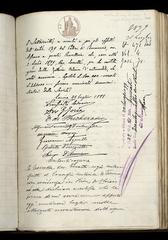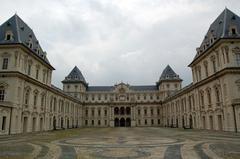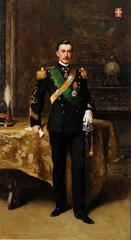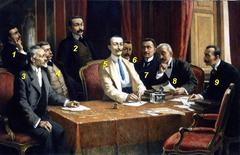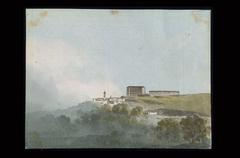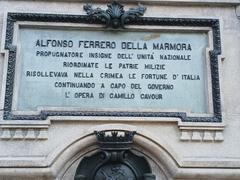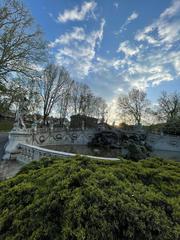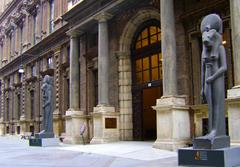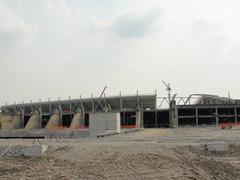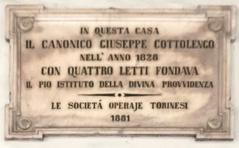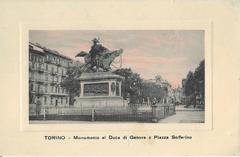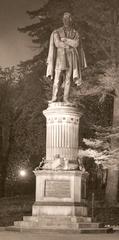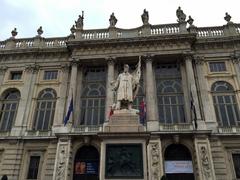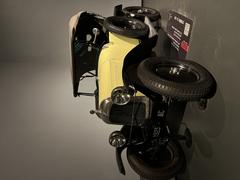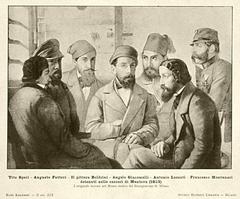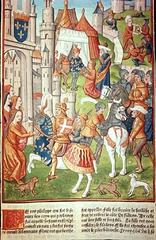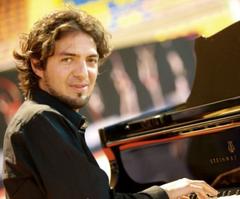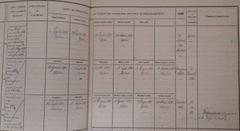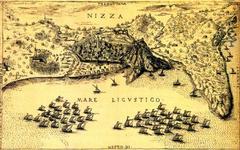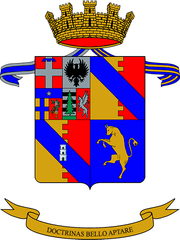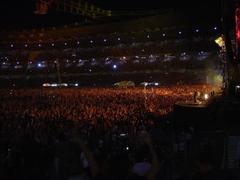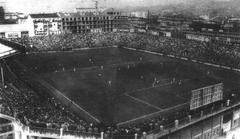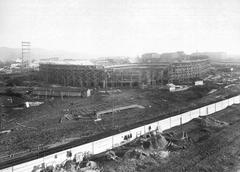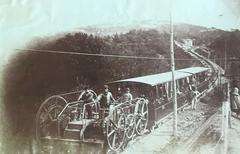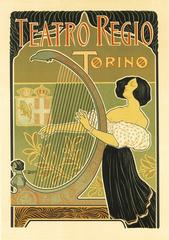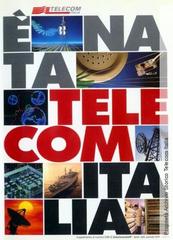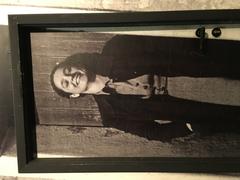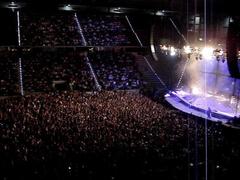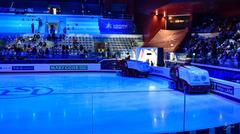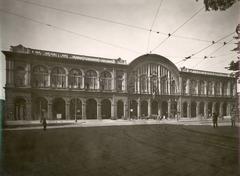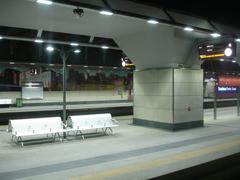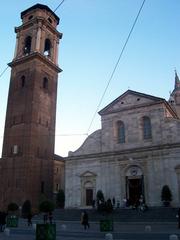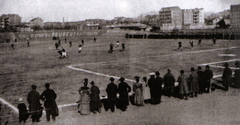Museo di Storia Naturale Don Bosco Turin: Visiting Hours, Tickets, and Historical Sites Guide
Date: 14/06/2025
Introduction: History and Significance
Located in Turin, Italy, the Museo di Storia Naturale Don Bosco is a landmark institution dedicated to natural history and scientific education. Established in 1879 within the Salesian Institute, the museum was inspired by Saint Giovanni Bosco’s mission to empower youth through practical and scientific learning. Over the decades, it has built one of the largest natural history collections in the Piedmont region, including more than 5,000 mineral specimens, extensive zoological displays, paleontological artifacts, and ethnological exhibits. The museum’s home within the historic Liceo Salesiano di Valsalice underlines its ongoing commitment to education and public engagement.
Today, the Museo di Storia Naturale Don Bosco offers a comprehensive exploration of the natural world, science, and culture. Its well-curated displays, interactive multimedia, and guided programs make it an essential destination for science enthusiasts, families, students, and tourists. The museum is easily accessible via public transport, is wheelchair-friendly, and offers free or affordable admission, ensuring a welcoming experience for all.
This guide covers all essential information, including visiting hours, ticketing, highlights of the collections, visitor tips, and special programs. For further details, please refer to the official ISPRA Museo Don Bosco page and the Valsalice museum website (ISPRA Museo Don Bosco, Valsalice Museo di Storia Naturale Don Bosco).
Table of Contents
- History and Origins
- Visiting Hours, Tickets, and Accessibility
- Getting There: Transportation and Parking
- Museum Highlights and Key Collections
- Visitor Tips
- Special Events and Educational Activities
- Frequently Asked Questions (FAQ)
- Nearby Attractions
- Practical Information and Facilities
- Health, Safety, and Sustainability Initiatives
History and Origins
The museum’s foundation is closely linked to Don Bosco’s progressive vision for education in Turin during the late 19th century. It began with the acquisition of a zoological collection from Canon Giovanni Battista Giordano. Over time, the collection expanded to include minerals, fossils, scientific devices, and ethnographic materials, all reflecting a legacy of scientific inquiry and education (Corriere Torino).
Visiting Hours, Tickets, and Accessibility
- Opening Hours:
- Monday–Friday: 9:00 AM–5:00 PM
- Closed on weekends and public holidays
- Admission: Free for all visitors
- Guided Tours: Available upon request for schools and groups (advance booking recommended)
- Accessibility: The museum is on the 3rd and 4th floors of Liceo Salesiano di Valsalice. Elevators are available. Visitors with mobility concerns should contact the museum before visiting.
Note: Some sources list slightly different hours and ticketing options. Check the official website for the latest updates (Valsalice Museo).
Getting There: Transportation and Parking
- Public Transport: Bus lines 60 and 63 stop near Viale Thovez 37, close to the museum entrance.
- Parking: Limited street parking is available. Public transport or nearby paid parking facilities are recommended due to ZTL (Limited Traffic Zone) restrictions in Turin.
Museum Highlights and Key Collections
Zoological Exhibits
The core of the museum’s collection, established in 1878, includes native and exotic birds, reptiles like the Hatteria, and mammals such as the platypus. Donations from Salesian missions and private collectors have enriched the collection with over 580 bird specimens, mammals, reptiles, and invertebrates (Valsalice).
Mineralogical and Paleontological Galleries
The museum houses the largest mineralogical display in Piedmont, with about 5,000 mineral specimens and 1,500 fossils—including trilobites, ammonites, and dinosaur eggs. Notable donations from Giovanni De Filippo and Enrico Donegani helped establish a reference point for regional and national mineralogical studies (Comune Torino).
Scientific Instruments
A diverse collection of 19th- and 20th-century scientific apparatus, including educational devices for physics, chemistry, and early radio transmission, illustrates the evolution of scientific teaching (Comune Torino).
Ethnographic and Anthropological Displays
The museum’s archaeological and ethnological collections focus on pre-Columbian American cultures, with artifacts such as arrowheads, knives, and everyday tools from South America (Archeocarta). Exhibits also document cultures encountered by Salesian missionaries, offering unique insights into human diversity.
Botanical Collection
Herbaria and botanical prints, some collected by Salesian missions, are complemented by ornithological prints from Egidio De Guidi and family, showcasing plant-animal relationships (Valsalice).
Visitor Tips
- Weekday visits are generally quieter and allow for a more personal experience.
- Photography is permitted (without flash) in most areas. Professional equipment requires authorization.
- Combine your visit with nearby attractions such as the Museo Egizio, Mole Antonelliana, or the Basilica di Maria Ausiliatrice.
Special Events and Educational Activities
The museum hosts temporary exhibitions, workshops, and collaborations with scientific institutions. Activities are designed for families, school groups, and science enthusiasts. Check the museum’s official site for event schedules (Valsalice).
Frequently Asked Questions (FAQ)
Q: Is the museum child-friendly?
A: Yes. Hands-on exhibits and guided tours make it ideal for children and students.
Q: Are guided tours free?
A: Yes, but booking in advance is necessary for groups.
Q: Is the museum open on weekends?
A: Typically closed on weekends. Please check for special openings during events.
Q: Is photography allowed?
A: Non-flash photography is permitted in most areas.
Q: Are there facilities for groups and school trips?
A: Yes, with tailored educational programs and group discounts. Book in advance.
Q: Is the museum wheelchair accessible?
A: Yes, with elevators and accessible restrooms.
Q: Are there food or shopping facilities?
A: There is a small gift shop. No café onsite, but nearby eateries are accessible.
Nearby Attractions
Enhance your cultural itinerary by visiting:
- Mole Antonelliana
- Museo Egizio (Egyptian Museum)
- Royal Palace of Turin
- Basilica di Maria Ausiliatrice
- Borgo Dora district
- Museo Ettore Fico
Practical Information and Facilities
- Location: Via Maria Ausiliatrice, 32, 10152 Torino TO, Italy
- Phone: +39 011 522 41 11
- Email: [email protected]
- Website: Museo di Storia Naturale Don Bosco
Facilities:
- Accessible restrooms on each floor
- Cloakroom
- Gift shop
- Free Wi-Fi
- Ramps and elevators
- Braille labels and tactile models for visually impaired visitors
- Audio guides and large-print materials upon request
Health, Safety, and Sustainability Initiatives
The museum adheres to health protocols, such as regular cleaning, hand sanitizer availability, and air purification. Sustainability is promoted through energy-efficient lighting, recycling programs, and conservation education.
Visuals and Media Suggestions
- Exterior and interior photos (alt text: “Museo di Storia Naturale Don Bosco exterior in Turin”, “Interior exhibits”)
- Displays of minerals and fossils (alt text: “Mineral collection at Museo di Storia Naturale Don Bosco”)
- Zoological and botanical specimens
- Guided tours and workshops
- Infographics for opening hours and ticket prices
Summary and Final Recommendations
The Museo di Storia Naturale Don Bosco is a cornerstone of Turin’s scientific and cultural heritage. Its rich, well-organized collections—ranging from zoology and mineralogy to archaeology and ethnology—offer a multidimensional view of our planet and its peoples. With free or affordable admission, accessible facilities, and engaging educational programs, it appeals to visitors of all ages and backgrounds.
For the best experience, consult the museum’s official resources for the latest updates on visiting hours, events, and workshops. Combine your visit with other top Turin attractions for a complete cultural journey. Explore digital tools like Audiala for interactive tours and enhanced learning.
For more information and updates, visit:


